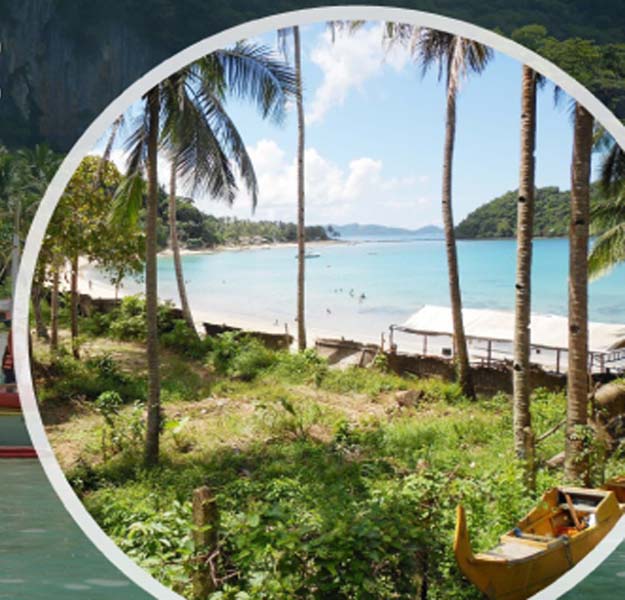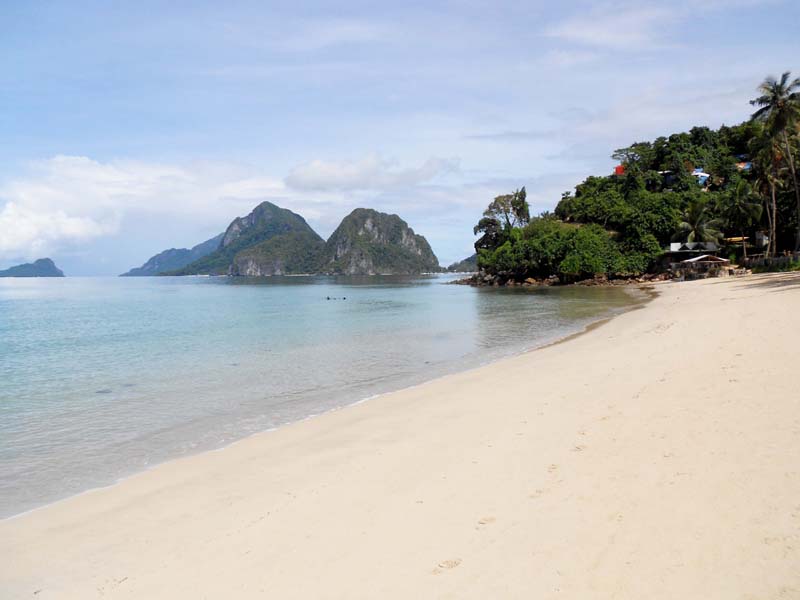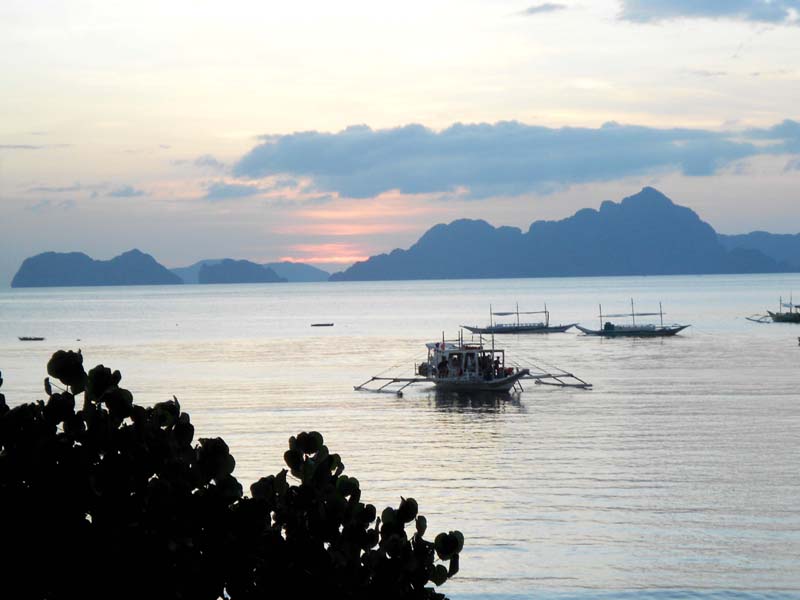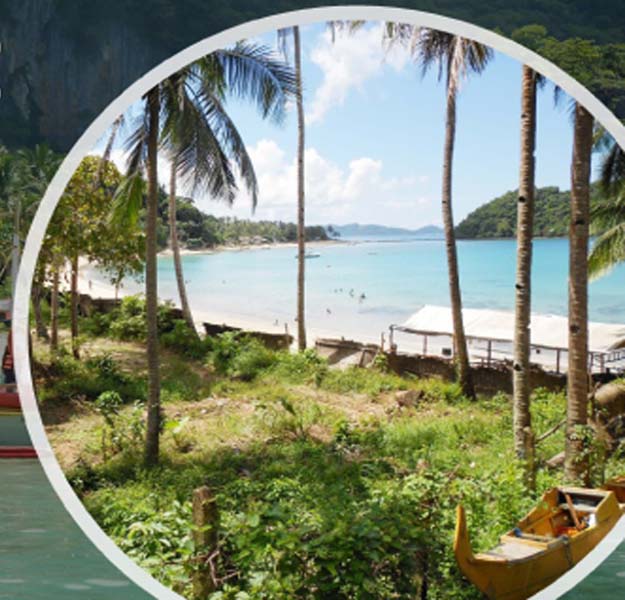
In Tulay’s Feb 21, 2017 issue, we explored the expansion of the tourism sector in the Philippines from historical and economic angles. The subsequent six-month closure of the resort island of Boracay, from April to October 2018, highlighted the fact that there are unsustainable forms of tourism in the Philippines.
Many tourist destinations in the archipelago offer the expected: a beach, coconut trees and water sports. But what distinguishes one site from the other is the availability of amenities, variety of activities, food services and so on. Fifteen years ago, Boracay was one of the few tourist spots that offered an ample choice of accommodations, restaurants, activities and entertainment.
Today, going to “Bora” is an obligatory trip on a long weekend in the company of friends or family. The island is usually busy and full of visitors, and the airport in the city of Kalibo, Aklan, has been receiving international flights from South Korea for several years. But though Boracay remains an attractive tourism destination, some people wish to visit a different kind of place, one offering more peace and quiet and with a more natural environment.
The current in-vogue tourist destination that has hosted a growing number of such visitors is El Nido, a municipality located in the north of the island of Palawan.
According to the local tourism office, around 200,000 people visit El Nido annually.
Most El Nido visitors are in awe of its exceptional landscape, namely its karst topography and the basalt rocks emerging from the turquoise ocean waters. Others enjoy diving or snorkeling around the coral reefs along the shoreline. However, the presence of these reefs leaves few beaches suitable for swimming, as the corals and tide prevent boats from traveling near the shoreline to berth.
Until 10 years ago, the only means of transportation connecting Palawan’s inhabited areas was the bangka. From Puerto Princesa, a dirt road linked various parts of the island, and journeys from one town to another would take around 10 hours.
After the road was concreted, traveling time to El Nido from Puerto Princesa by van shortened to about four hours. Most tourists would arrive at Puerto Princesa Airport and then travel by van.
There are other alternatives to reach El Nido. One is via El Nido Airport, owned by the Ayala company, and is used exclusively by the company’s airline, Swift Air, which offers three roundtrip flights daily. But the company prioritizes tourists staying in its exclusive and very expensive resorts. Another option is to take a boat departing from Busuanga.
El Nido displays all the characteristics of a developing city, such as the chaotic and unregulated construction. The seafront is mostly occupied and the road from the south towards the airport is what guides construction activities.
Located south of the urban area of El Nido, Barangay Corong-Corong is typical of such disorganized urbanization, with various shacks and sari-sari stores standing alongside hotels, bars and entrances to beach resorts.
It is only upon exiting the gates of the resorts that one can discover El Nido’s amazing environment, including its breathtaking landscape, which is even more beautiful at sunset.

These resorts are havens of peace, but sadly they have changed considerably in the past five years. Notable distances separated beach properties in the 1990s, but today they are adjacent to each other.
Their owners, considered pioneers in the 1980s and 1990s, were often foreigners who opened a hotel-restaurant, along with a diving center. By the 2010s, these establishments had been gradually sold to Filipino entrepreneurs wishing to invest in tourism.
Simultaneously, access to El Nido was facilitated by the new road combined with air travel, whether from Manila or, more recently, from regional hubs, such as Cebu.
Demand for hotel accommodation grew accordingly, requiring establishment owners to broaden and diversify their offerings by providing different types of accommodation.
The nipa hut was slowly phased out and gave way to buildings with several floors, with their best rooms presenting stunning views of the coast. Properties were also subdivided into strips of land along the shoreline.
The attractiveness of El Nido is perpetually linked to its geology and climate, and nothing should be taken for granted. Are tourists learning lessons from this wonder? Is the region’s current development affected by the consequences of climate change, such as the rise in sea level? Is the uncontrolled development of the tourism sector happening at the expense of the environment?
Two forms of tourism coexist in El Nido. One category is the exclusive and expensive beach resorts and the other is the low- and middle-range establishments located near the coast.
Most tourists stay by the seafront that provides a view of the bay, so cheap accommodation has colonized such areas. Construction along the seafront is in response to growing domestic and international demand.
For Western travelers, El Nido is attractive because of its location along the coast. They go there to avoid other crowded beaches and escape from their daily lives in mostly urban, noisy and stressful environments.
Some, however, beyond wishing to travel to the edge of the world, may find it a disadvantage to have no access to the internet.
Staying in El Nido can be regarded as a quest for simplicity. Getting away from it all seems important, especially from the stresses of everyday life.
Places like El Nido are appreciated because our daily lives are saturated with too much information on screens and too many meetings and appointments.
One’s attention is constantly being captured in the public sphere. The aspiration for simplicity, even for a brief moment, is essential to our own life balance.
As well as the beauty of the area, visitors can take part in all kinds of water sports, such as canoeing, paddling, diving, snorkeling and swimming, although only a few beaches are suitable for such activities due to coral reefs lining the coastline.
Exploring neighboring islands can be expensive, renting a private bangka for the day may cost up to P10,000, so many aspiring Robinson Crusoes fall back on group boat trips, with cost coming down to an average of P1,200, with lunch included.
They can also go on island-hopping tours and take part in planned activities on each island, such as swimming and snorkeling. At different sites, peddlers rent or sell equipment required by visitors.
Tourist attractions have also helped generate local employment. Most local people in the area previously worked in the fishing industry.
But in the last 15 years, due to the banning of dynamite fishing, decreasing sea resources, and the creation of a natural reserve in the north of Palawan, some fishermen switched to transporting tourists. The hotel industry also provides many jobs.


Development in the Philippines generally follows what is happening in other parts of Asia, especially with regards to types of tourism destinations, with small and cheap hotels for backpackers and larger hotels for wealthier tourists being the norm, as well as bars along the beach.
In El Nido, there are many food establishments inspired by Thailand, such as “Big Bad Thai,” a bistro and bar run by a Thai chef, along with shops selling accessories and clothes imported from Thailand.
Thailand also exported the trend of full moon beach parties, such as those held in Las Cabanas Beach, which is advertised in posters in neighboring towns.
Enterprising foreigners take advantage of the tourists’ demand for western products. For example, a group of French entrepreneurs opened Gusto, a restaurant that serves ice cream, crêpes and coffee in a pleasant setting.
They also launched Crazy Monkey, which sells gelato and has branches in beaches around the area, such as in Nacpan.
Apart from selling products related to the beach resort business, several foreigners who settled in El Nido brought their native culinary traditions.
A Ukrainian couple established two restaurants two years ago, a beach bar and a restaurant called Mama Odessa, offering Ukrainian food.
In the same building as the restaurant, they also opened a brewery, Bodmo, where beer is brewed and directly served to customers, but they have not installed bottling facilities. This globalization of food services is a response to the demands of tourists visiting and traveling around El Nido, making it an attractive destination.
But is there a viable future for El Nido? Fifteen years ago, handicrafts created by the lumad people of Palawan were sold in a few shops in town. Today, objects sold and presented as local are actually Bulul sculptures from Banaue.
We are essentially witnessing a “uniformization” of Filipino culture, and tourists, wherever they are from, are as yet unaware of the wide variety of cultures that exist in the archipelago. By not showcasing the arts and crafts of Palawan as distinct and, therefore, not promoting it, local culture is in danger of disappearing.
Generally speaking, El Nido is a model of unsustainable development, even as it strives to meet local and international demands for a beautiful landscape, which the Protected Area Management of El Nido-Taytay is trying to protect.
